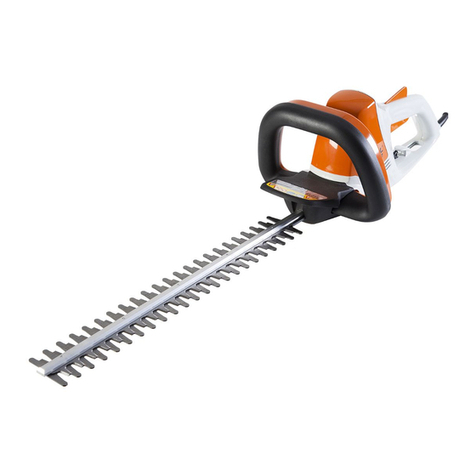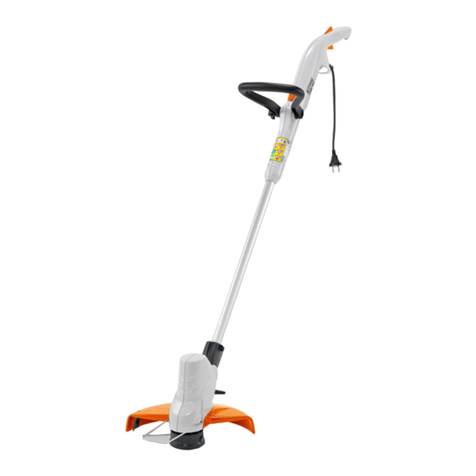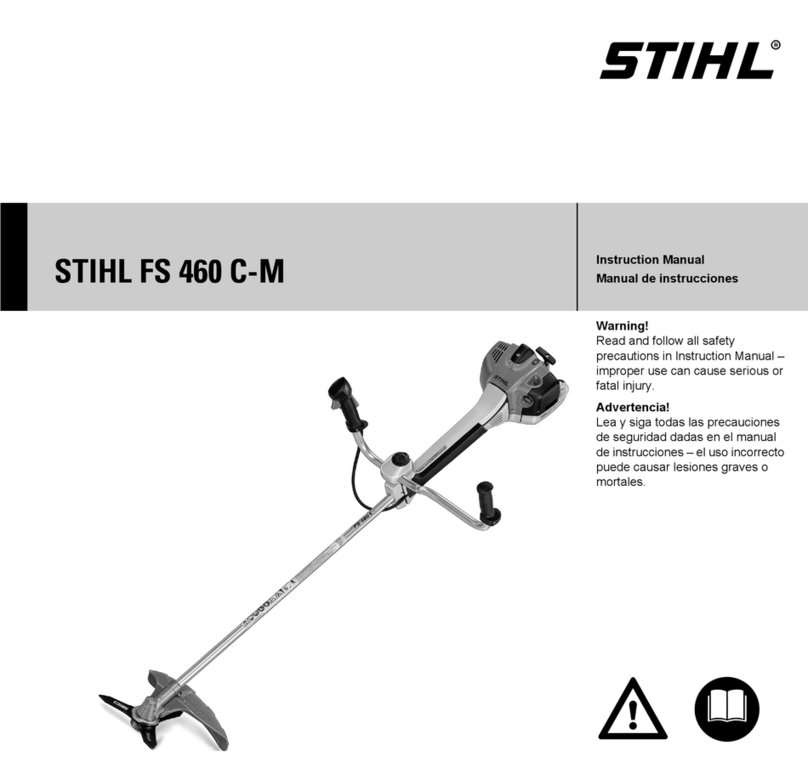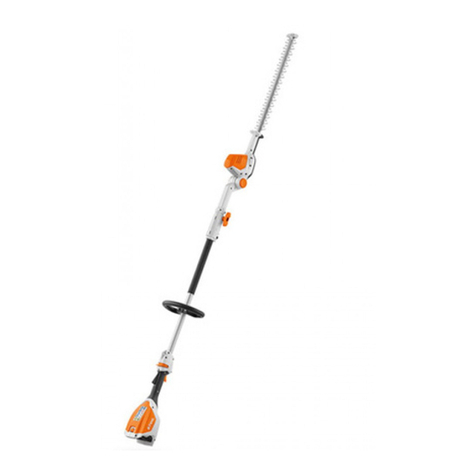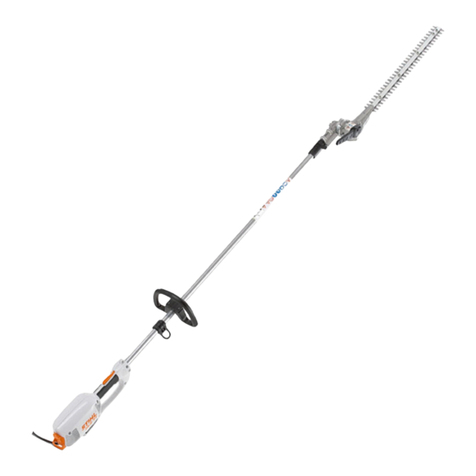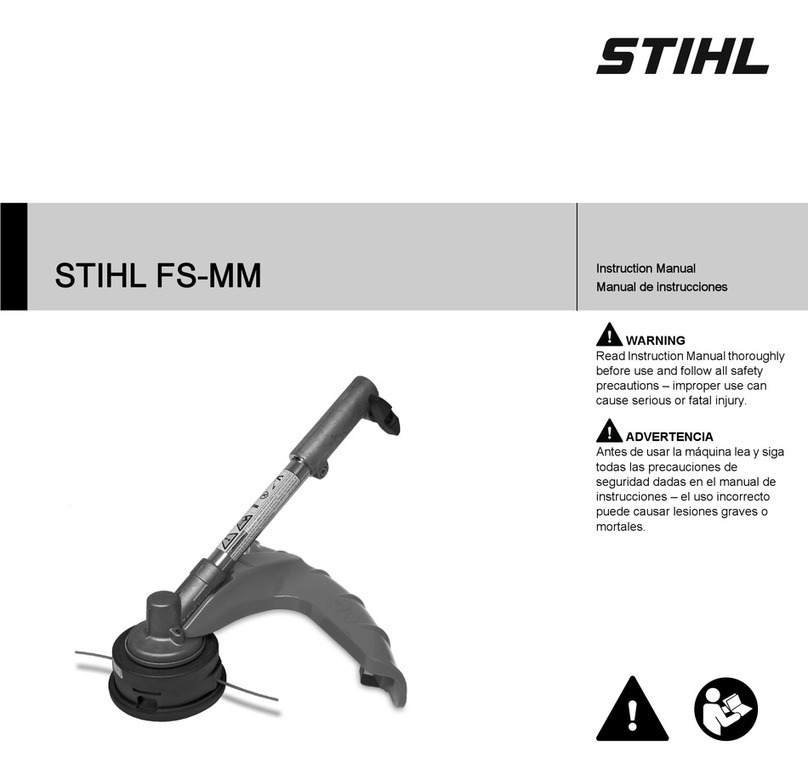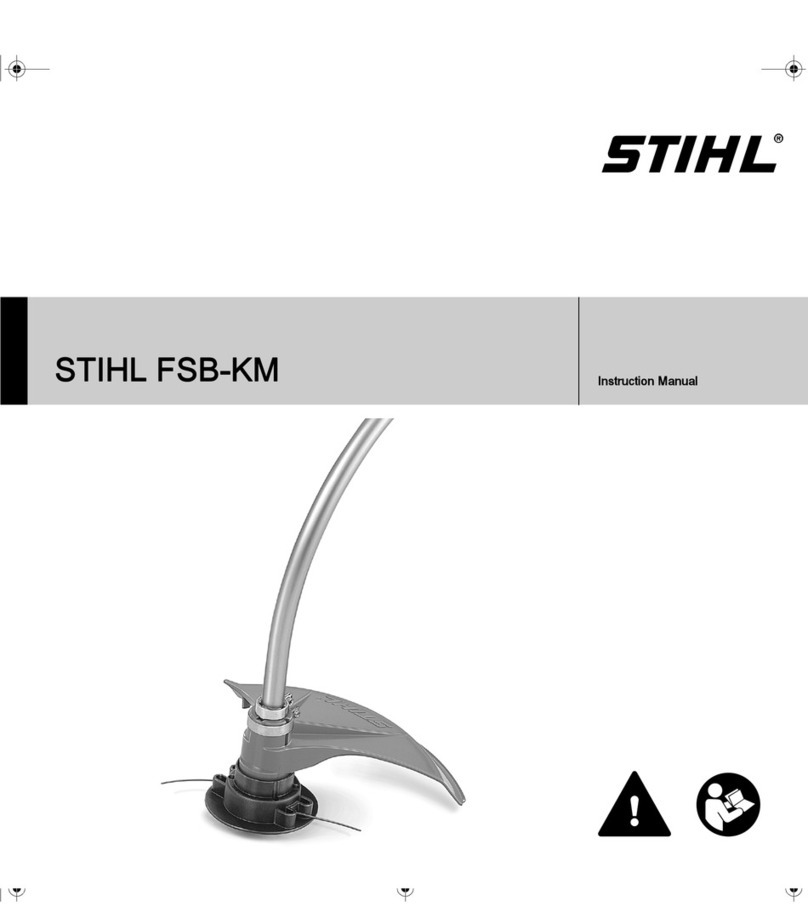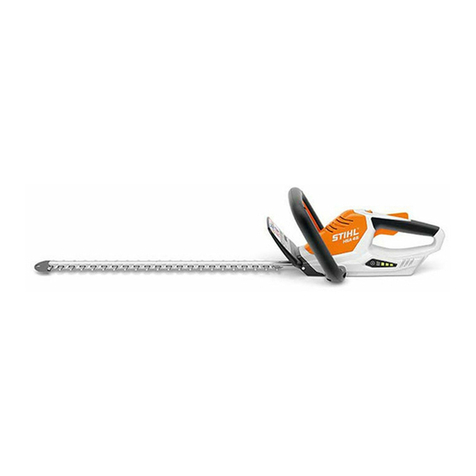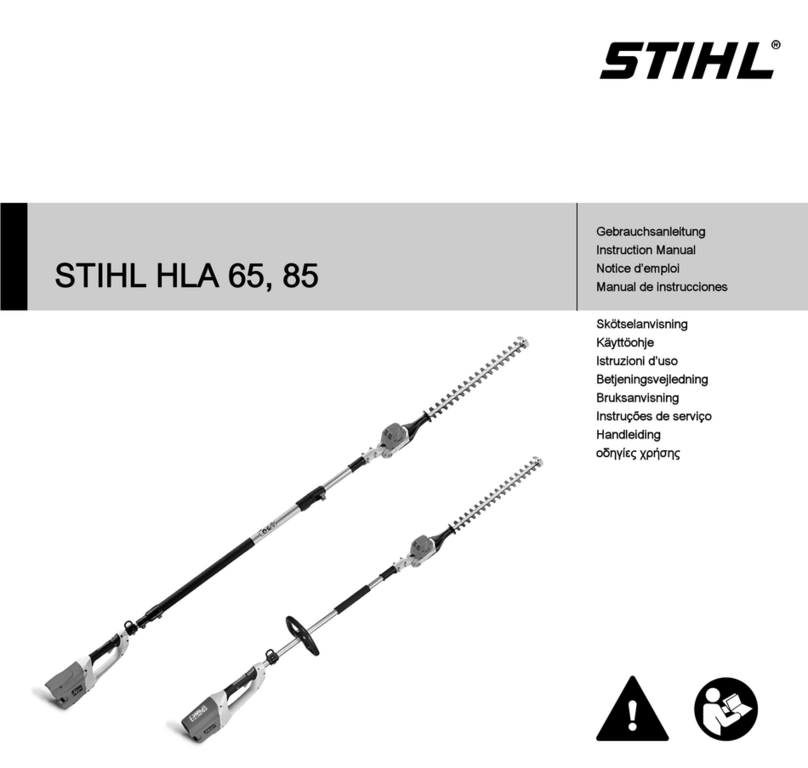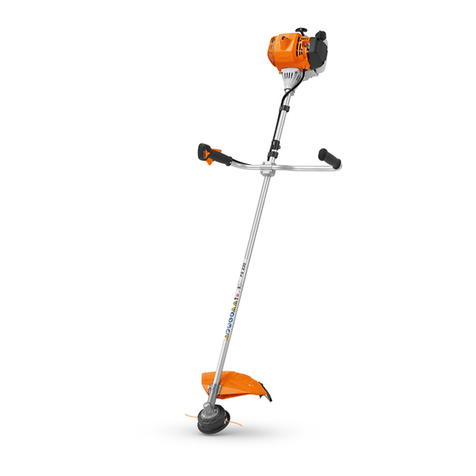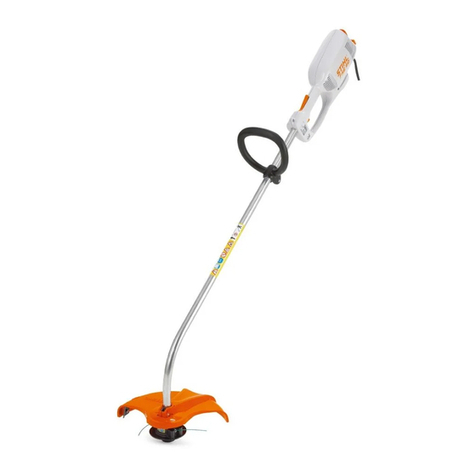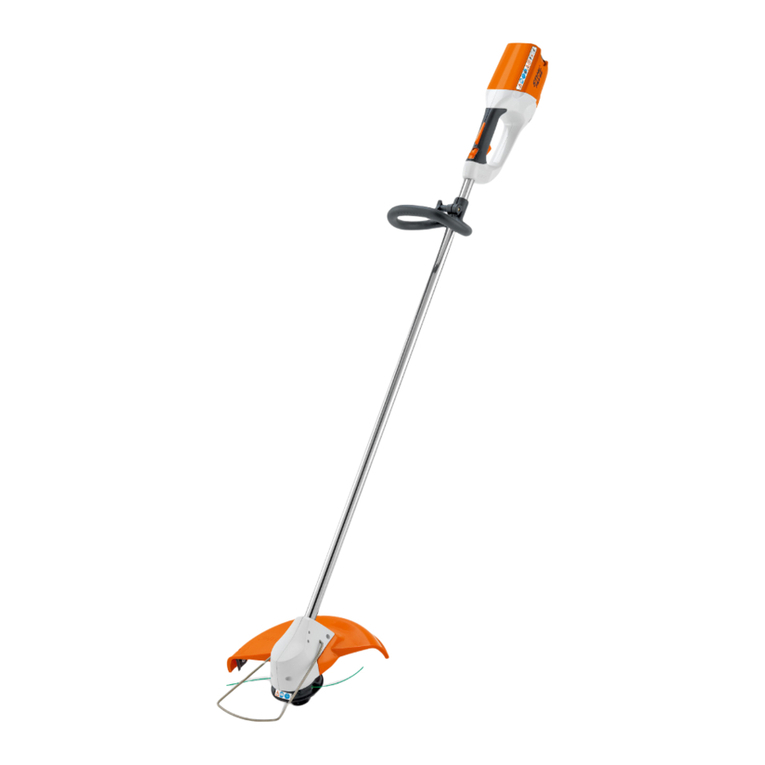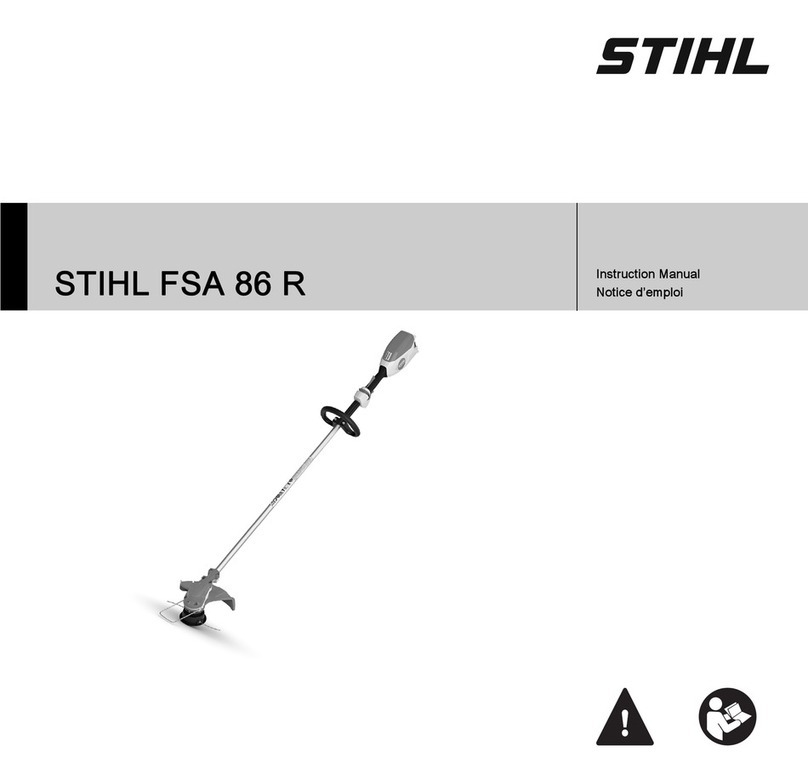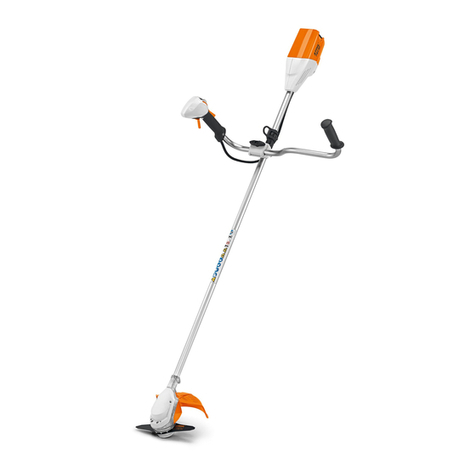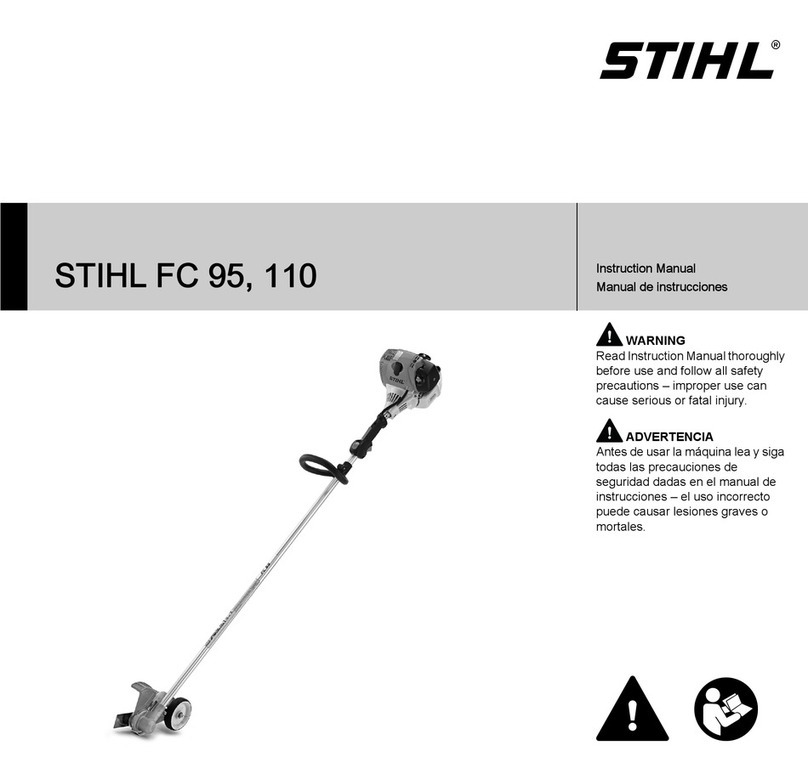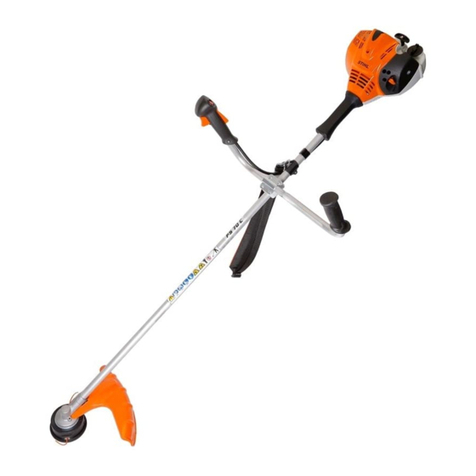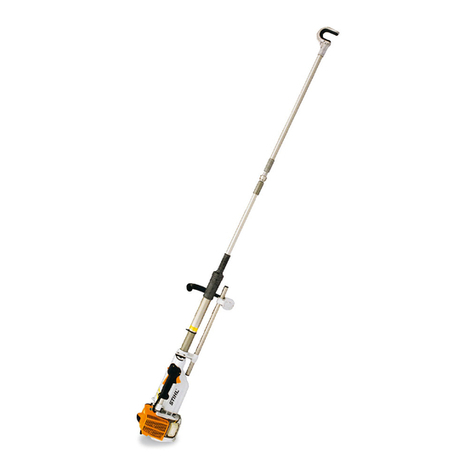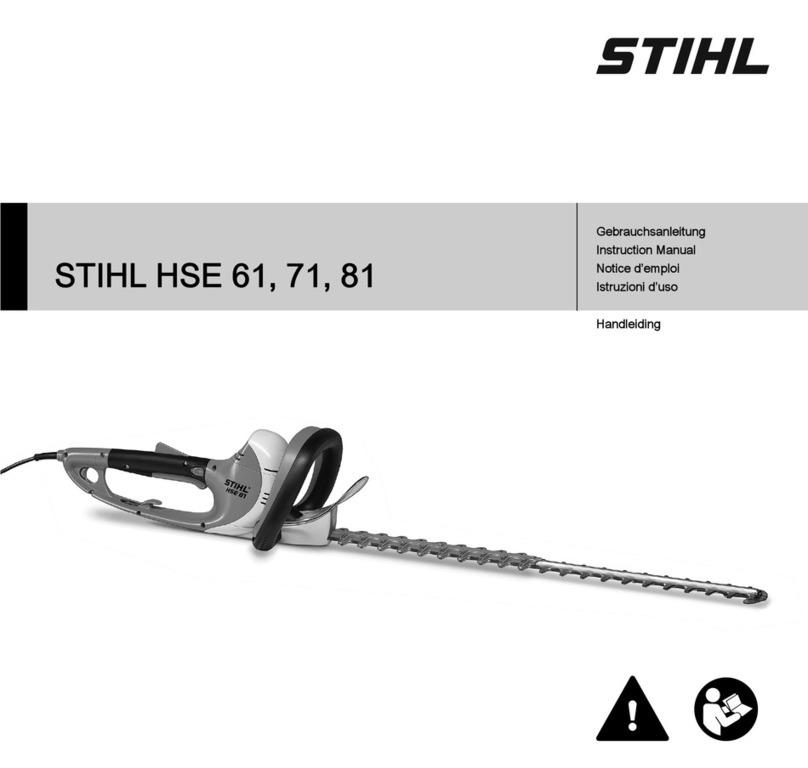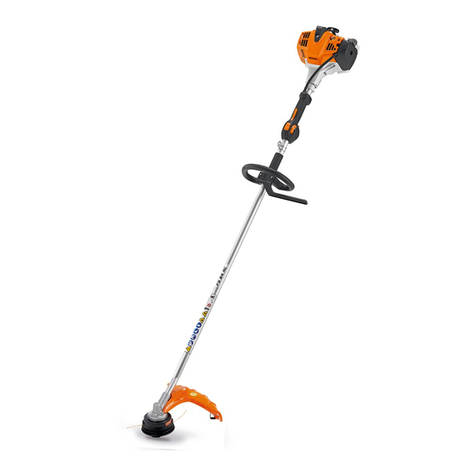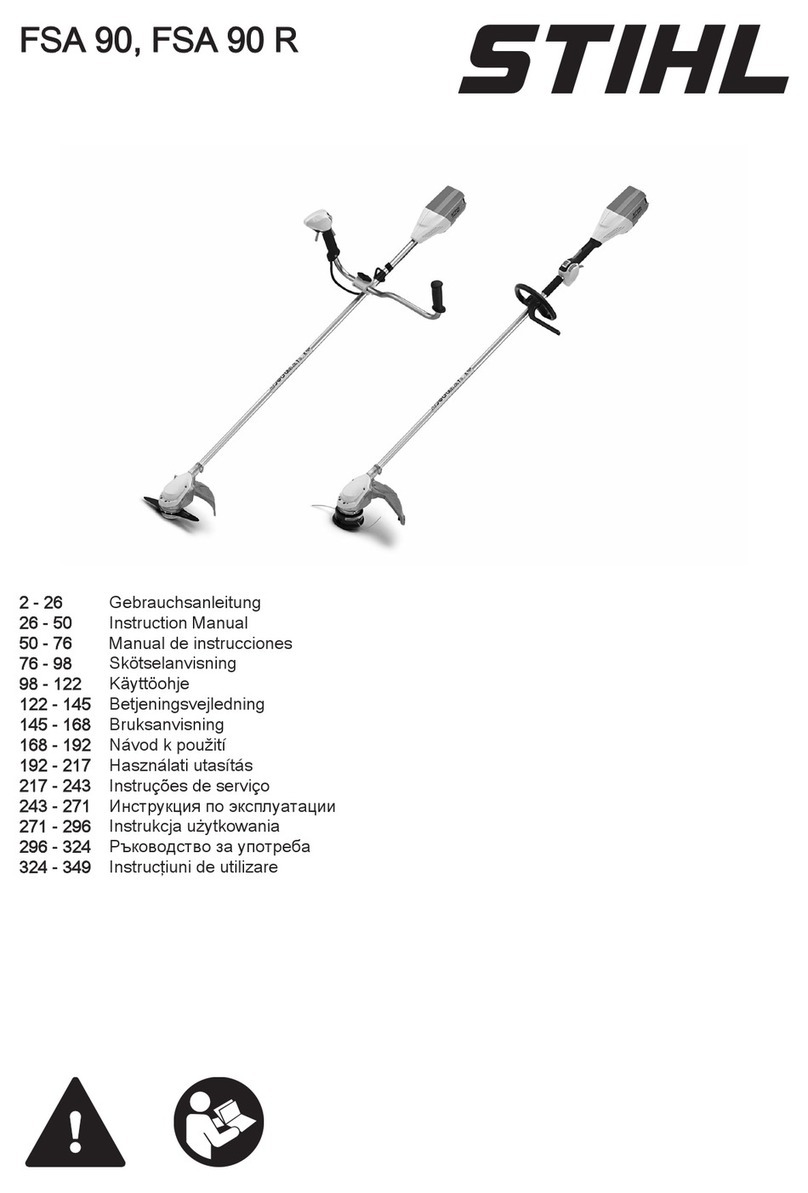
Be extremely careful when cutting tall hedges,
check the other side of the hedge before starting
work.
Check for correct idling, so that the cutting
blades stop moving when the throttle trigger is
released. If the cutting blades still move, have
the machine repaired by your specialist dealer.
Check and correct the idle speed setting at regu‐
lar intervals.
Note that the cutting blades continue to run for a
short period after you let go of the throttle trigger
- flywheel effect!
The gearhead becomes hot during operation. To
reduce the risk of burn injury, do not touch the
gear housing!
Take special care in slippery conditions – damp,
snow, ice, on slopes or uneven ground.
Clear away fallen branches, scrub and cuttings.
Watch out for obstacles: tree stumps, roots – risk
of tripping or stumbling!
Make sure you always have good balance and
secure footing.
2.7.1 When working at heights:
–Always use a lift bucket
–Never use the machine while standing on a
ladder or in a tree
–Never work on an insecure support
–Never use the machine with just one hand
Be particularly alert and cautious when wearing
hearing protection because your ability to hear
warnings (shouts, alarms, etc.) is restricted.
Take breaks when you start getting tired or feel‐
ing fatigue – risk of accidents!
Work calmly and carefully – in daylight conditions
and only when visibility is good. Proceed with
caution, do not put others in danger.
As soon as the engine is running, the
power machine generates toxic
exhaust gas. These gases may be
odorless and invisible and may con‐
tain unburned hydrocarbons and ben‐
zene. Never run the engine indoors or
in poorly ventilated locations, even if
your model is equipped with a cata‐
lytic converter.
To reduce the risk of serious or fatal injury from
breathing toxic fumes, ensure proper ventilation
when working in trenches, hollows or other con‐
fined locations.
Stop work immediately if you start suffering from
nausea, headaches, impaired vision (e.g. your
field of vision gets smaller), impaired hearing,
dizziness, or impaired concentration – these
symptoms may possibly be the result of too-high
exhaust gas concentration – Risk of accidents!
Operate your power tool so that it produces a
minimum of noise and emissions – do not run the
engine unnecessarily, accelerate the engine only
when working.
To reduce the risk of fire, do not smoke while
operating or standing near your power tool. Com‐
bustible fuel vapor may escape from the fuel sys‐
tem.
If your power tool is subjected to unusually high
loads for which it was not designed (e.g. heavy
impact or a fall), always check that it is in good
condition before continuing work – see also
"Before Starting". Check in particular that the fuel
system has no leaks and the safety equipment is
fully operative. Never use a power tool that is no
longer safe to operate. In case of doubt, contact
a dealer.
Do not operate your power tool in the starting
throttle position – engine speed cannot be con‐
trolled in this position.
Inspect the hedge and work area to avoid dam‐
aging the cutting blades:
–Remove stones, rocks, pieces of metal and
other solid objects
–Ensure that no sand or small stones get
between the cutting blades, e.g. when working
close to the ground.
–When cutting hedges next to or against wire
fences, do not touch wire with the cutting
blades
Do not touch electric power lines – never cut
through electric power lines – risk of electrocu‐
tion!
Do not touch the cutting blades.while
the engine is running. If the cutting
blades become jammed by an object,
switch off the engine immediately
before attempting to remove the
object – risk of injury!
Opening the throttle when the cutting blades are
jammed increases the load and reduces the
working speed of the engine. The clutch then
slips continuously and this causes overheating
and damage to important components (e.g.
clutch, plastic housing components) – as a result,
there is a risk of injury! from the idling cutting
blades
2 Safety Precautions and Working Techniques English
0458-449-0121-C 5
